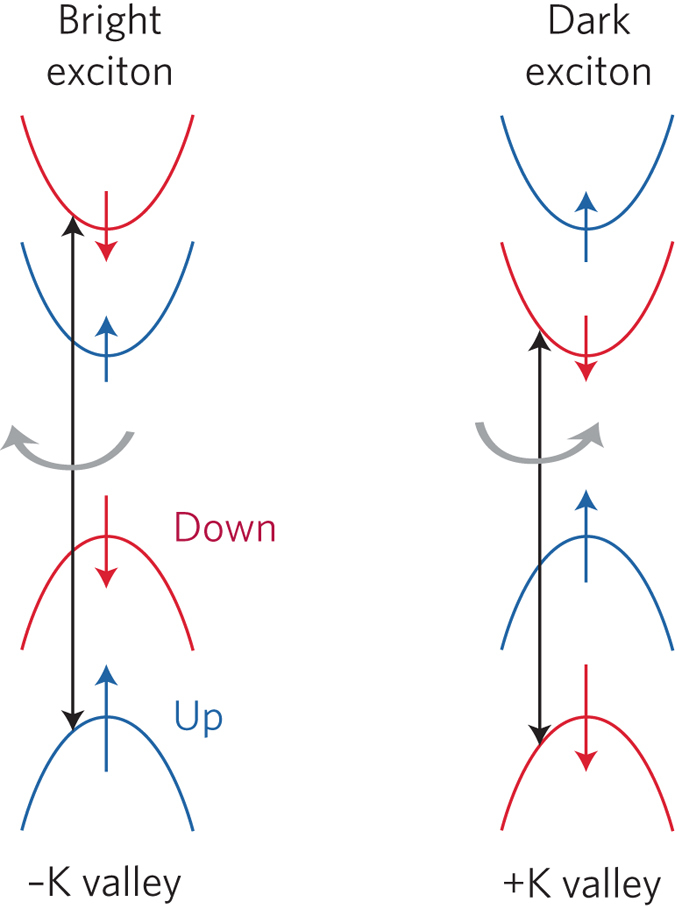2D transition metal dichalcogenides are promising for electronic and optical devices thanks to their unique structural, electrical and mechanical properties that include a wide range of direct bandgaps, valley-polarized carriers, strong spin-orbit coupling and superconductivity. Due to their spin-polarized valence bands and predicted spin splitting at conduction band edges, the lowest-lying excitons (bound electron-hole pairs) in these materials should be spin-forbidden and optically dark. Until now, however, no one has directly probed these dark excitons in an experiment. Researchers in the US have now used an in-plane magnetic field to brighten these excitons in monolayer tungsten selenide (WSe2) and so observe their properties for the first time. The new work might help in the development of optically-controlled information processing devices in the future……
http://nanotechweb.org/cws/article/tech/69281
